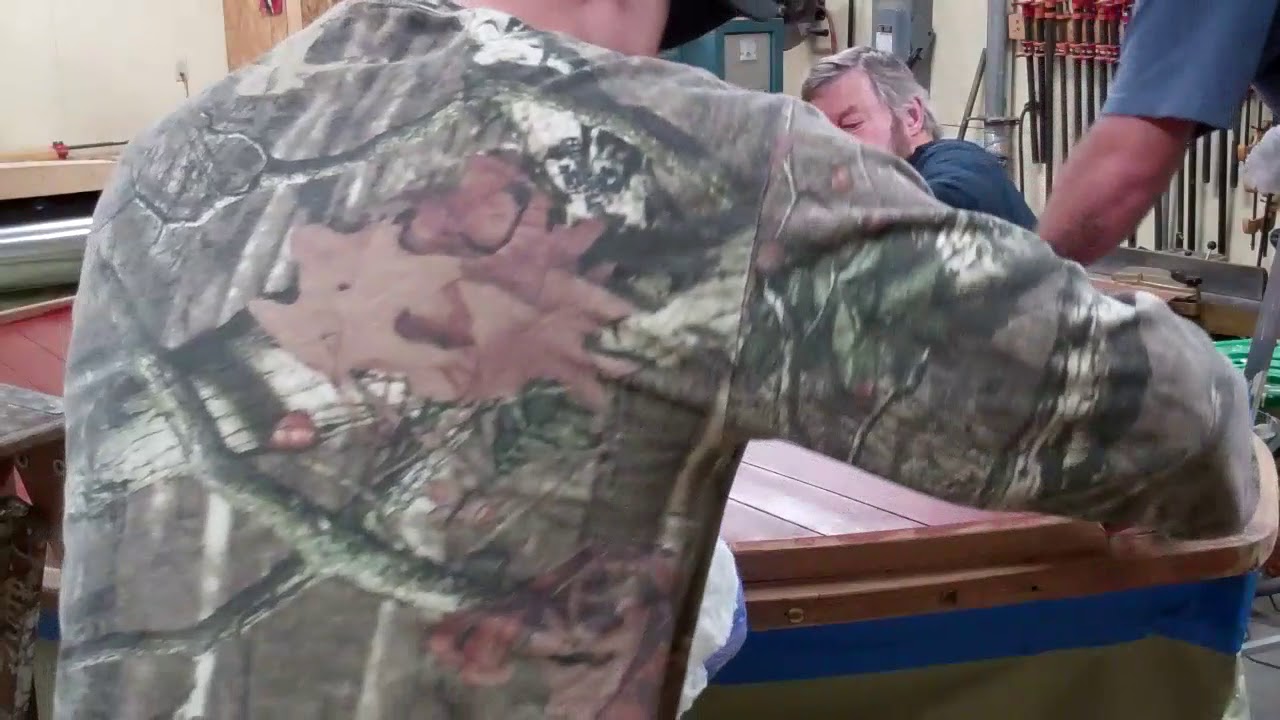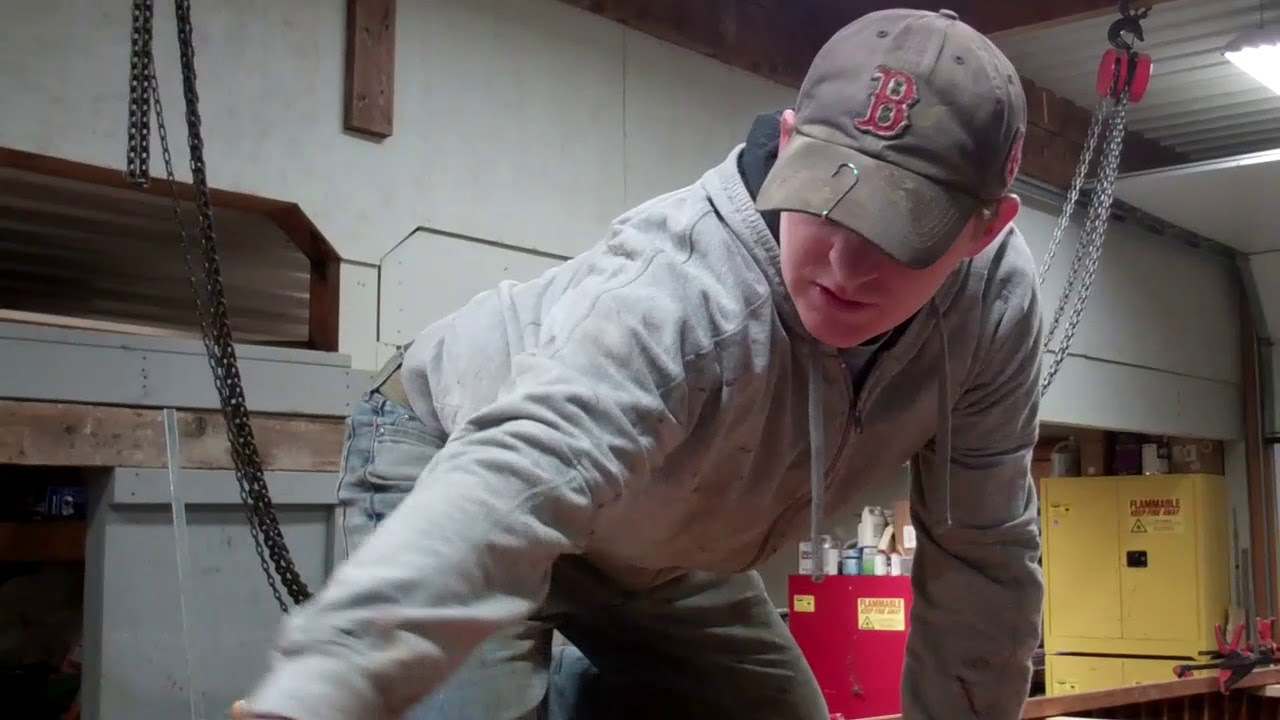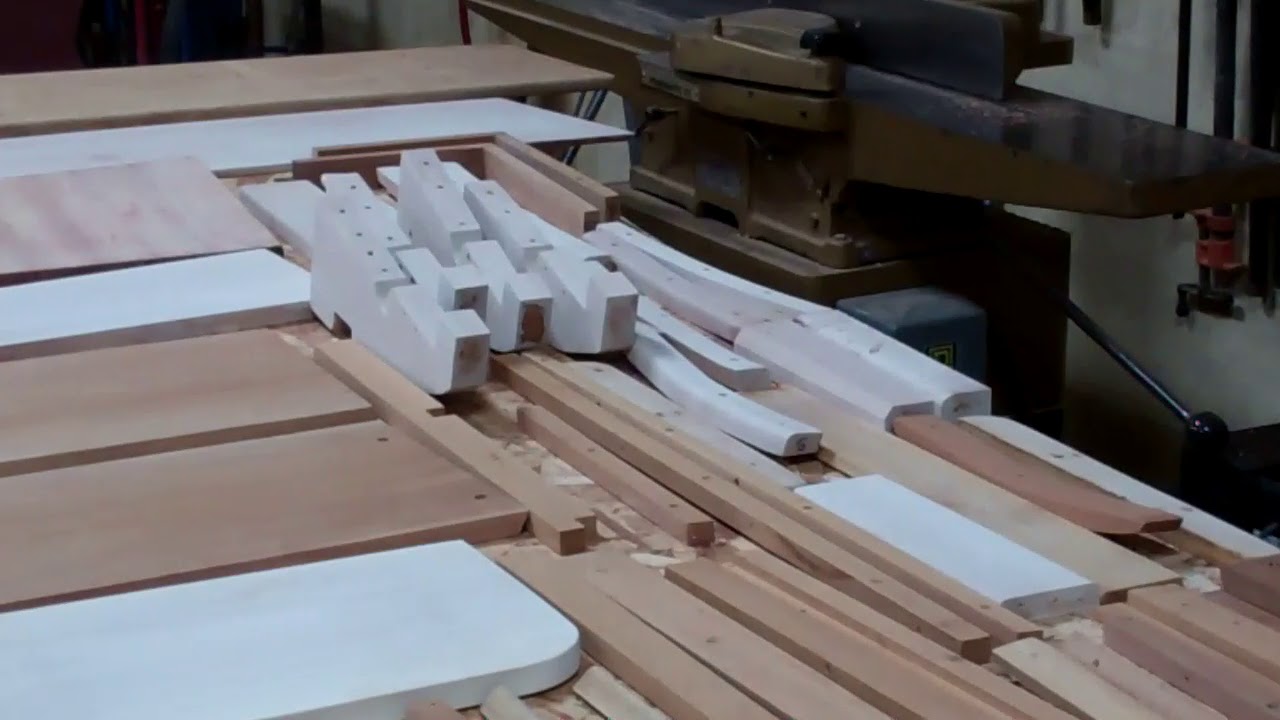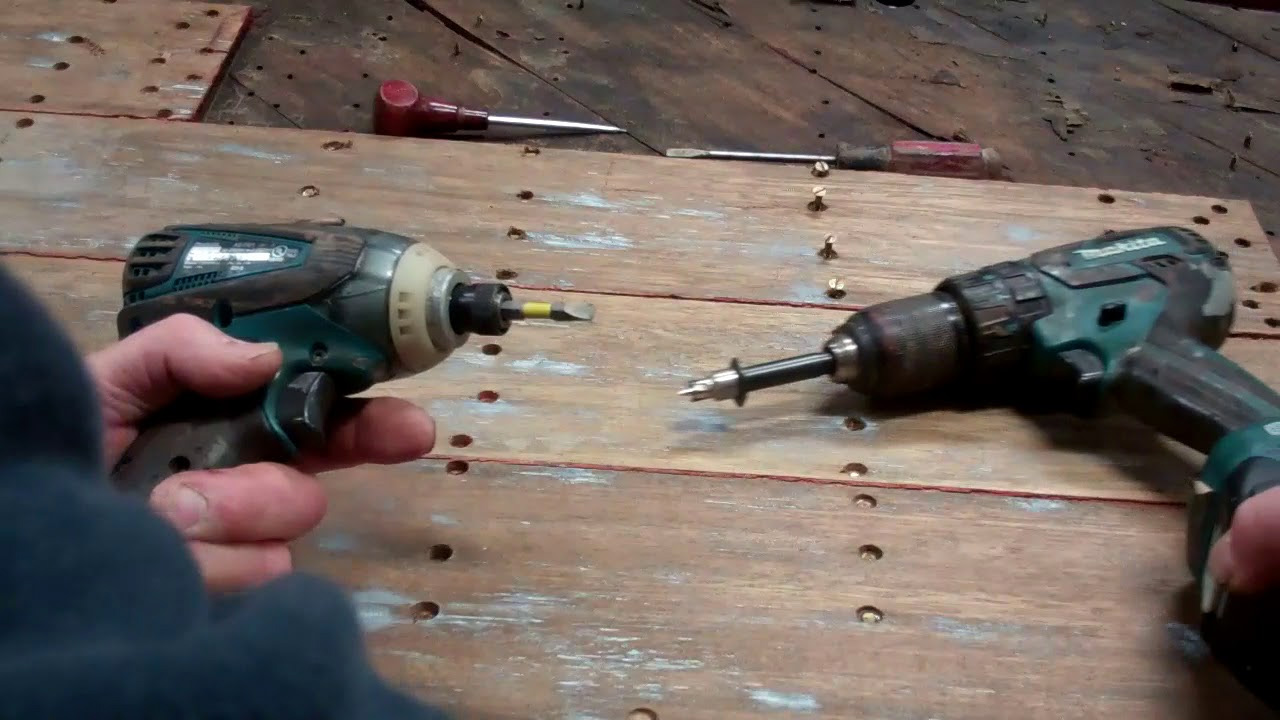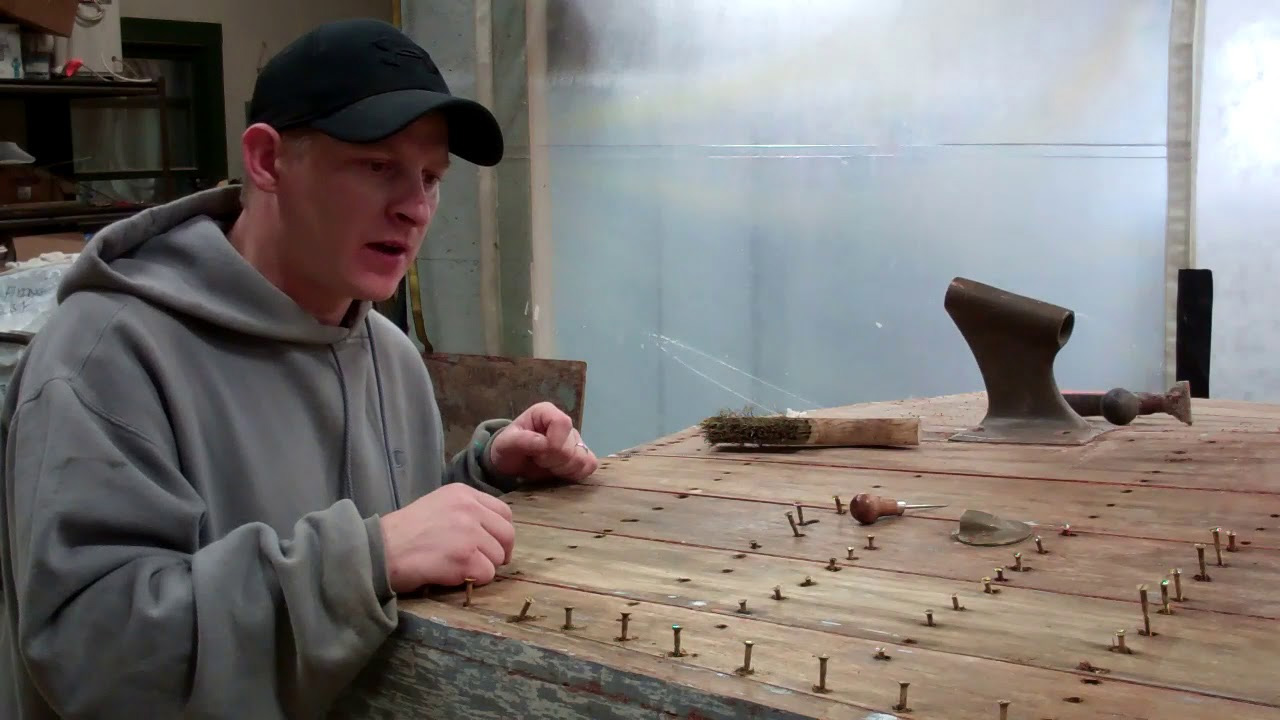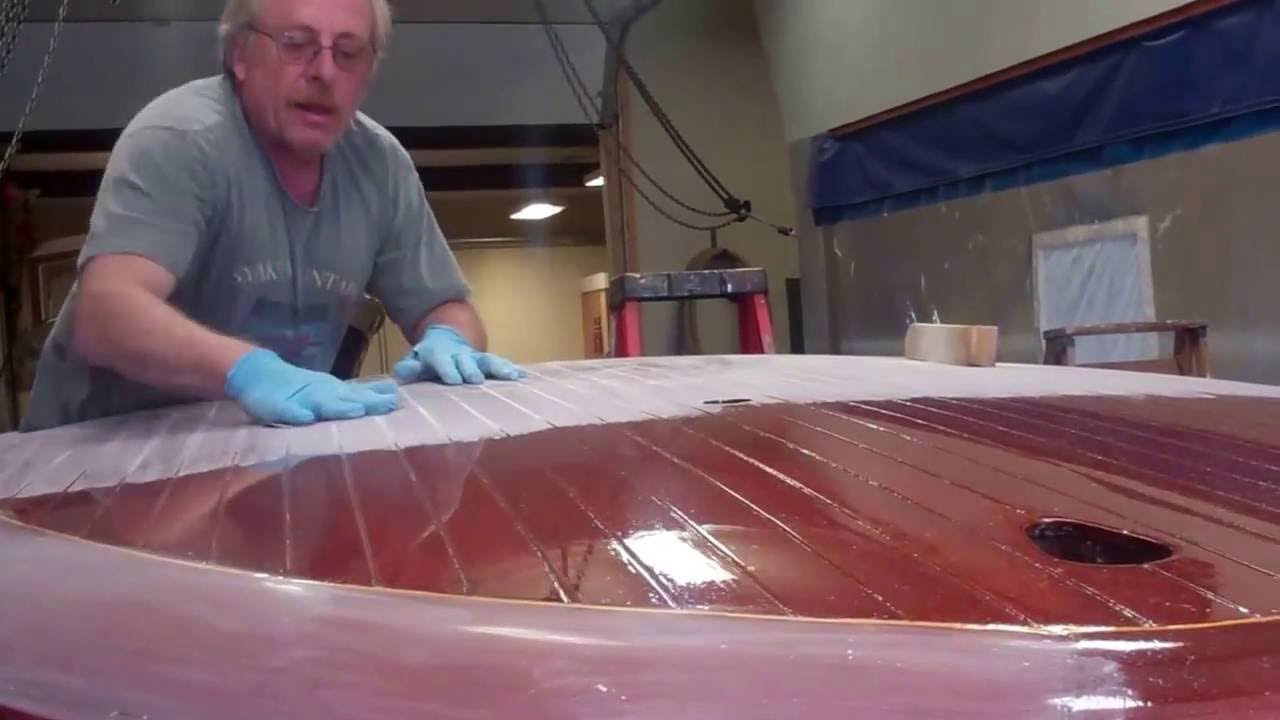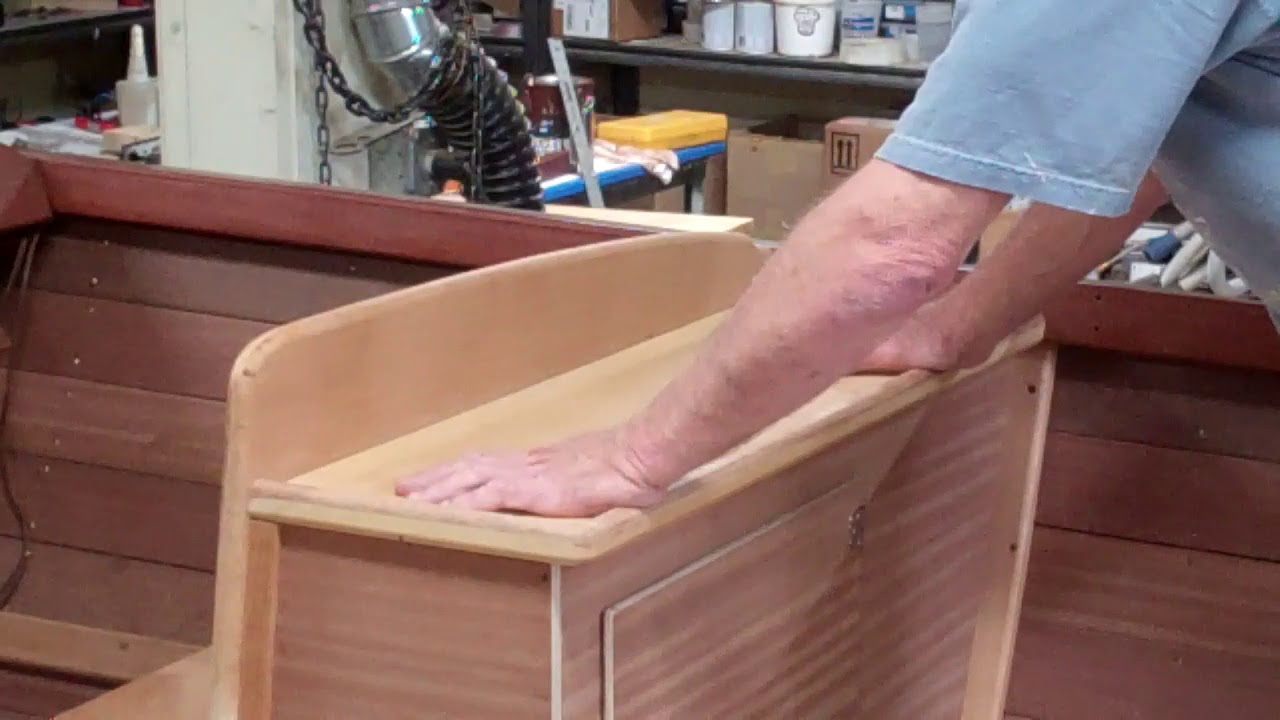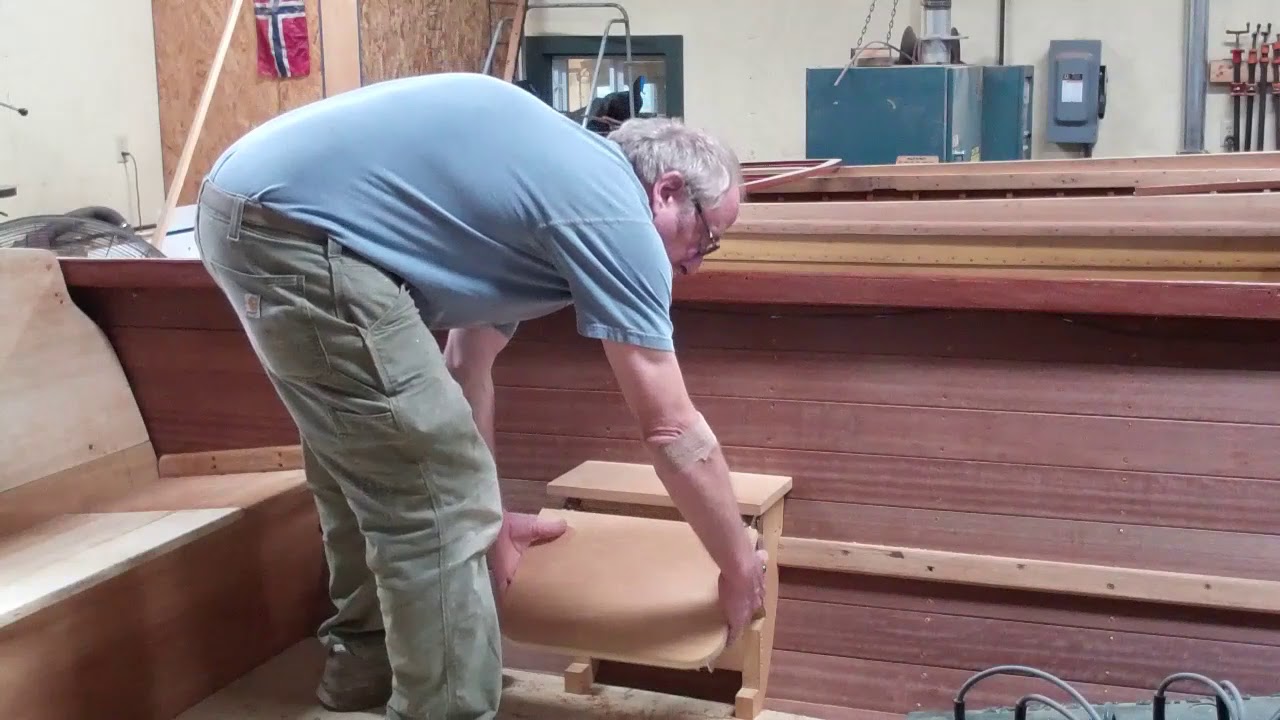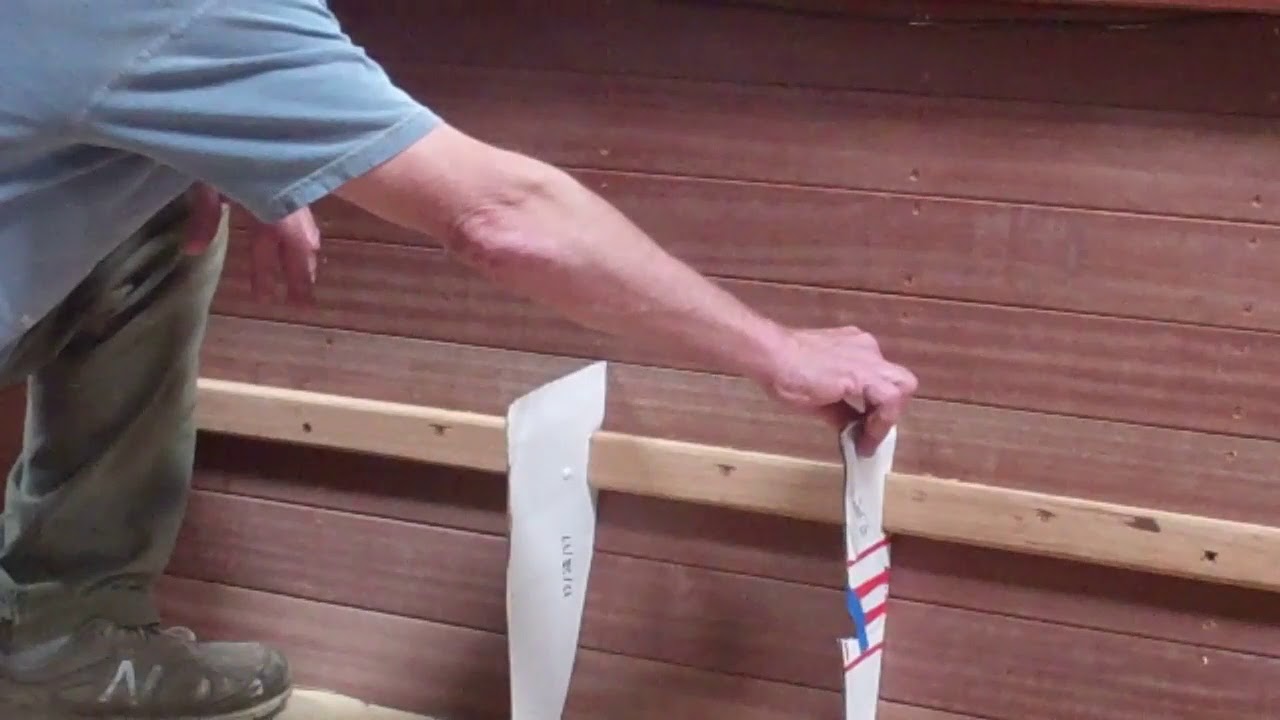With nineteen coats of Pettit Easypoxy Hi-Build varnish applied to her topsides, transom; and engine box, seating and windshield components; it is time to turn our focus to the decks, coamings and rub rails of our 1940 16’ Lyman Custom Yacht Tender with aft-facing aft cockpit.
Lyman offered this basic hull configuration as a yacht tender like mine, but also as a runabout. Whether the aft cockpit faced forward or aft was the buyer’s choice. He or she could also order a windshield that folded down or one that was fixed. Mine is fixed.
My research also suggest that the fore and aft deck seams were sealed with a mahogany caulking material that only filled the seam channels about two-thirds, with the rest left open so she presents herself with strong lines, lines that help offset the reality that she is quite beamy for her length. (We wull use Sikaflex 291 LOT in mahogany.)
Today we are applying Sandusky Chris-Craft red mahogany filler stain? Why not the somewhat browner Lyman mahogany stain? Again what few period photos I can find and the several of these vessels built between 1938 and 1940 tended to have a somewhat red cast, which in this case will complement the blonde Cypress topsides rather nicely.
Additionally, in our experience, the red morphs toward red-brown as we apply the three coats of CPES and the Pettit Hi-Build that will follow.
CPES is next, and will be applied on Monday, the first two coats with the second following the first immediately per Danenberg, with a third coat applied Tuesday morning.
Filling the seams will be next, followed by the initial coats of varnish, a process that will continue until we reach twenty-two or so coats.

